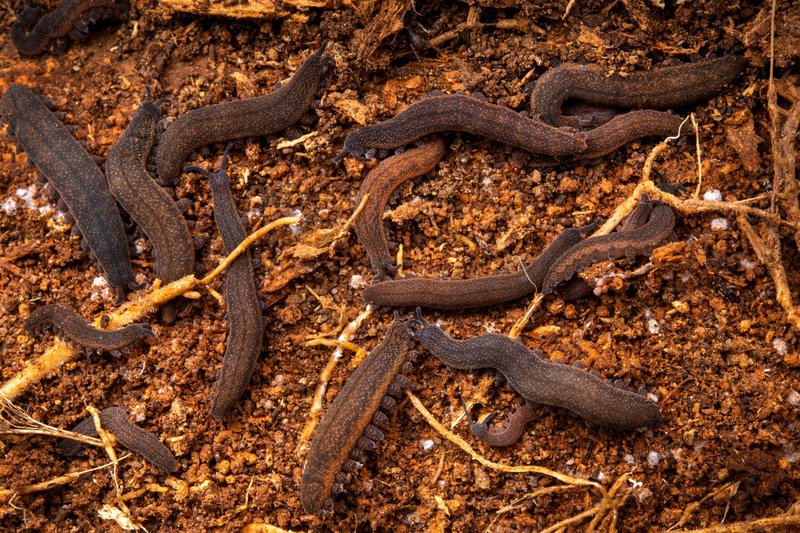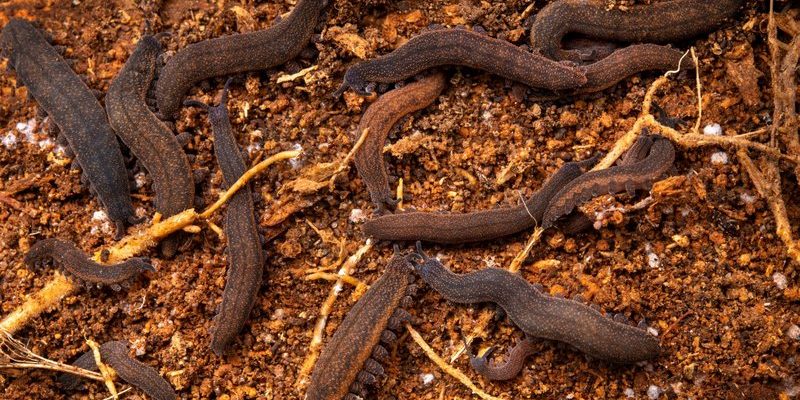
Imagine you’re in a lush rainforest, surrounded by towering trees, the air thick with humidity, and the faint sound of water trickling nearby. Velvet worms thrive in such environments, often hiding under leaf litter or in decaying logs. Understanding how these creatures live, move, and interact with their environment requires more than just a quick glance—scientists must dive deep into their habitats. Let’s explore how they do that, from the tools they use to the techniques that help uncover the mysteries of these incredible animals.
Setting the Scene: Habitat Exploration
To study velvet worms, researchers first need to find them, which involves exploring their natural habitats. These creatures are typically found in tropical and subtropical regions, especially in rainforests where moisture and shelter are abundant. ***Here’s the thing***: velvet worms love dark, damp places, making them tricky to spot during the day.
Researchers often lead expeditions into these lush environments, armed with an array of tools. They’ll look under decaying leaves, peel back bark, and sift through soil. This exploratory work is crucial because it sets the stage for a deeper understanding of the animal’s behaviors and their interactions with other organisms in the ecosystem. By documenting the various microhabitats where velvet worms are found, scientists can get a clearer picture of what conditions they thrive in.
Additionally, understanding their habitat helps researchers identify potential threats. For instance, if a velvet worm’s home is encroached upon by agriculture or urban development, knowing where they live can guide conservation efforts. **Studying these environments is more than just a scientific endeavor; it’s about protecting these unique ecosystems for future generations.**
Tools of the Trade: Equipment Used
Just like a chef needs the right tools to whip up a fantastic meal, scientists studying velvet worms rely on specialized equipment. This gear helps them observe these creatures in their natural settings without causing distress.
- Field Cameras: These are set up in areas where velvet worms are known to live. The cameras can capture their behavior without human interference, allowing researchers to see how they interact in their environment.
- Light Traps: Because velvet worms are often active at night, researchers might use light traps to lure them out. These traps attract not only worms but also other creatures in the ecosystem, giving a fuller picture of the biodiversity in the area.
- Collecting Gear: Scientists often use tools like forceps and containers to safely collect worms for closer examination. This involves minimal handling to reduce stress on the animal.
Each of these tools plays a role in gathering vital information about velvet worms. They help scientists answer questions about their breeding habits, diets, and how they adapt to environmental changes. By using these tools thoughtfully, researchers can paint a detailed picture of velvet worm life that goes beyond what we can see with the naked eye.
Behavioral Studies: Watching Them Thrive
Once researchers have located velvet worms, the next step is observing their behavior. Studying how these creatures move, hunt, and interact with one another provides insight into their lifestyles. **Honestly**, this part of the research can be the most rewarding.
Velvet worms are fascinating hunters, using a unique predatory technique. They can shoot a sticky substance at their prey, which typically consists of insects, immobilizing them before consumption. Researchers might set up observations to witness this technique in action. Watching a velvet worm capture its meal is a slow-motion dance of nature’s design, showcasing the beauty of adaptation over millions of years.
Additionally, scientists focus on social behaviors, such as mating rituals. Velvet worms can be surprisingly social for creatures often thought of as solitary. By observing these interactions, researchers can learn about their reproductive strategies and the importance of environmental conditions on their mating success. Each observation adds a piece to the complex puzzle of their existence.
Genetic Studies: Understanding Their DNA
Beyond behavior, researchers are also diving into the genetic makeup of velvet worms. **You might be wondering** why genetics are important. Well, studying the DNA of these animals helps scientists understand their evolutionary history and how they relate to other species in the animal kingdom.
By collecting samples from different populations, researchers can analyze genetic diversity. This information tells us not only about the resilience of these populations but also about their adaptability to changing environments. Understanding genetic variation is crucial for conservation efforts, especially in areas where habitats are threatened.
Genetic studies can also illuminate how velvet worms have survived for millions of years, providing clues about their success as a lineage. With their unique traits, researchers can better understand the evolutionary pressures velvet worms have faced and continue to encounter today.
Conservation Efforts: Protecting Velvet Worms
Studying velvet worms in the wild isn’t just an academic pursuit; it’s tied deeply to conservation efforts. As researchers uncover the needs and habits of these creatures, they can advocate for policies aimed at protecting their habitats.
Many areas where velvet worms thrive are under threat from deforestation, pollution, and climate change. By highlighting the ecological roles these creatures play, scientists can help promote awareness about their importance. Velvet worms are indicators of a healthy environment; if they thrive, it often means the ecosystem is in good shape.
Organizations may collaborate with local communities to establish protected areas or educate the public about the significance of biodiversity. **By sharing what they learn, researchers can inspire action that supports both velvet worms and the entire ecosystem they belong to.**
Challenges in Field Research
Studying velvet worms in the wild isn’t without its challenges. Conditions in tropical environments can be tough to navigate. The humidity, insects, and even the terrain can make fieldwork demanding. Researchers must be prepared for unexpected weather changes or even the occasional wildlife encounter.
Moreover, capturing accurate data can be tricky. Velvet worms are sensitive to disturbances, and their elusive nature makes it hard to observe them without influencing their behavior. Scientists often need to balance their desire for knowledge with the need to limit their impact on these creatures and their habitats.
Keeping track of environmental changes, such as temperature and humidity, is also crucial. These factors affect velvet worm activity, so researchers must constantly adapt their study methods to ensure they’re getting the most accurate information possible.
The Future of Velvet Worm Research
As we learn more about velvet worms, the future of research in this area looks promising. Advances in technology, like genetic sequencing and remote sensing, are opening new doors for understanding these creatures. Tools that allow for non-invasive data collection and monitoring can help scientists study velvet worms without directly impacting their environment.
Furthermore, collaboration across disciplines—from ecology to genetics—means richer, more comprehensive studies of these fascinating creatures. By sharing findings and techniques, researchers can build a more complete picture of how velvet worms fit into the larger tapestry of life on Earth.
Ultimately, studying velvet worms in the wild is a testament to the power of curiosity and the ongoing search for knowledge. It’s a reminder that even the smallest creatures can teach us about resilience, adaptation, and the delicate balance of life on our planet.
In conclusion, the study of velvet worms in their natural habitats is a multi-faceted approach that combines fieldwork, cutting-edge technology, and a passion for understanding. By respecting their environments and unraveling their secrets, scientists continue to contribute to our understanding of biodiversity and the importance of conservation for future generations.

